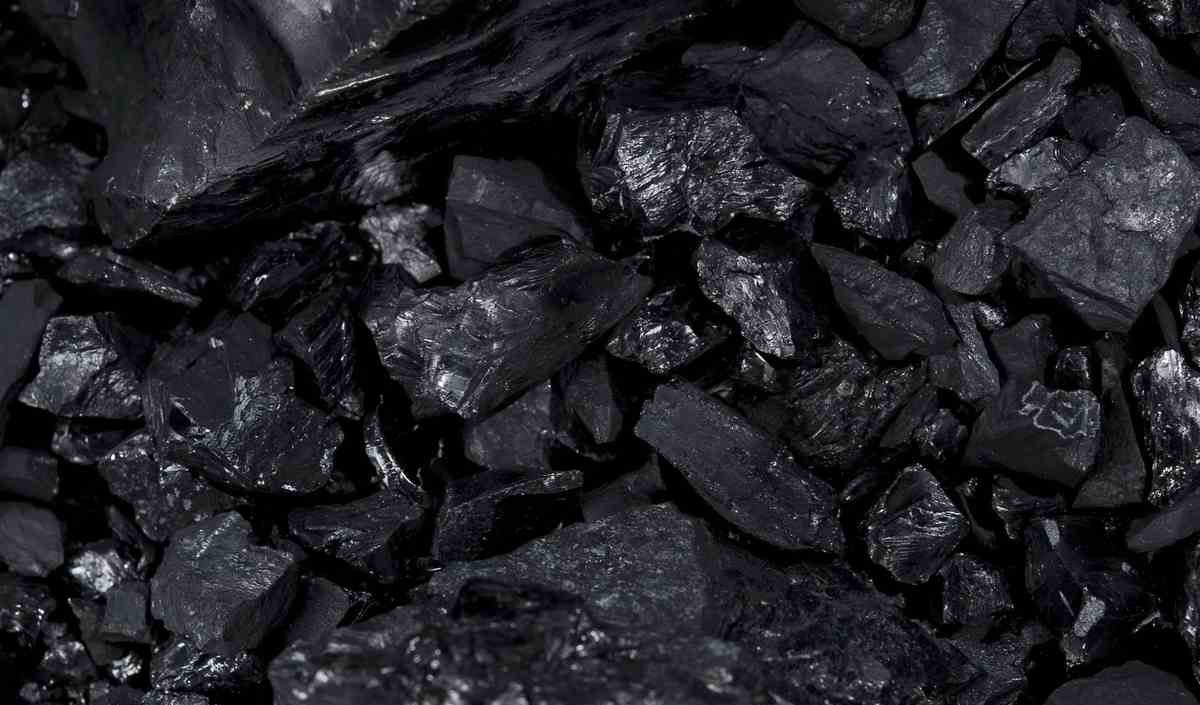The physicochemical and rheological characterization of asphalt binder is used to directly relate the performance of biomodified gilsonite pavement as it relates to fatigue and cracking at low temperatures. While other performance criteria, such as spalling, are also influenced by the characterization of the binder, it is known that the latter is also very sensitive to the overall skeleton and the gradation of the mixture. In order to improve the performance of pavements, the asphalt industry commonly uses various modifiers to improve the rheological properties of the binder before and after exposure to oxidative aging. Physicochemical properties are the intrinsic physical and chemical characteristics of a substance. These include appearance, boiling point, density, rheological properties, Bingham refers to plastic fluid parameters such as pour point and plastic viscosity. A significant reduction in the supply of asphalt as well as increased demand for the construction, repair and maintenance of pavements has led to a steep rise in the price of asphalt. This, in turn, has prompted the asphalt industry to seek alternatives and/or additional resources to petroleum-based asphalt. However, some of these substitutes differ significantly from conventional petroleum-based bitumen and require specification modifications and additions to adequately account for the behavior of the new alternative products.  In an effort to provide an alternative, low cost and sustainable asphalt binder, this paper examines the benefits of using gilsonite with a bio-binder. It has been documented that the introduction of gilsonite into asphalt can improve its quality at high temperature and moisture sensitivity while reducing the overall cost. In this research, gilsonite was added to the bio-binder. A rheological characterization of each bio-modified gilsonite sample was performed to check the performance. The results show that the BMG samples exhibit superior high temperature performance as well as comparable low temperature performance and adhesion compared to PG64-22. In some cases, BMG samples show even better performance at lower temperatures, as evidenced by higher values of m and lower creep stiffness compared to PG64-22. Notably, 30% BMG was shown to have the best properties at -12ºC in the samples tested. In addition, Fourier transform infrared spectroscopic spectra were collected to compare the chemical functional groups of PG64-22 with those of BMG. Given the availability of gilsonite internationally, the effects of gilsonite are well researched. Although low temperatures may not adversely affect performance, studies have shown that modification of asphalt binders with gilsonite can reduce the anti-cracking abilities of asphalt binders leading to increased susceptibility to cracking.
In an effort to provide an alternative, low cost and sustainable asphalt binder, this paper examines the benefits of using gilsonite with a bio-binder. It has been documented that the introduction of gilsonite into asphalt can improve its quality at high temperature and moisture sensitivity while reducing the overall cost. In this research, gilsonite was added to the bio-binder. A rheological characterization of each bio-modified gilsonite sample was performed to check the performance. The results show that the BMG samples exhibit superior high temperature performance as well as comparable low temperature performance and adhesion compared to PG64-22. In some cases, BMG samples show even better performance at lower temperatures, as evidenced by higher values of m and lower creep stiffness compared to PG64-22. Notably, 30% BMG was shown to have the best properties at -12ºC in the samples tested. In addition, Fourier transform infrared spectroscopic spectra were collected to compare the chemical functional groups of PG64-22 with those of BMG. Given the availability of gilsonite internationally, the effects of gilsonite are well researched. Although low temperatures may not adversely affect performance, studies have shown that modification of asphalt binders with gilsonite can reduce the anti-cracking abilities of asphalt binders leading to increased susceptibility to cracking.  This is also reflected in a study conducted by the Colorado DOT, which found that although the addition of gilsonite may reduce rooting, pavement was more susceptible to cracking when assessed over a 3-year period. Therefore, effective use of gilsonite will require the use of other modifiers to reduce the adverse hardening of gilsonite. Among them, the use of polymer modification has been widely studied. Polymers such as styrene-butadiene-styrene (SBS) are widely used as asphalt binder modifiers to improve the performance characteristics of hot mix asphalt. However, one of the concerns in using SBS is its availability, especially for large construction projects due to the short supply of butadiene resources. Additionally, analysis of asphalt binders modified with crumb rubber and gilsonite at low operating temperatures shows improved low-temperature performance compared to the modification made with gilsonite alone. Therefore, the use of other materials in combination with gilsonite at the optimum percentage can result in significant performance gains. To better understand the performance improvement due to the interaction between the modifier and gilsonite, it is important to understand the chemical composition of gilsonite. Combining information from advanced nuclear magnetic resonance (NMR) and ultrahigh-resolution mass spectrometry, Helms and his research team proposed a structural model for gilsonite that is a mixture of several pyrroles and several fused aromatic rings.
This is also reflected in a study conducted by the Colorado DOT, which found that although the addition of gilsonite may reduce rooting, pavement was more susceptible to cracking when assessed over a 3-year period. Therefore, effective use of gilsonite will require the use of other modifiers to reduce the adverse hardening of gilsonite. Among them, the use of polymer modification has been widely studied. Polymers such as styrene-butadiene-styrene (SBS) are widely used as asphalt binder modifiers to improve the performance characteristics of hot mix asphalt. However, one of the concerns in using SBS is its availability, especially for large construction projects due to the short supply of butadiene resources. Additionally, analysis of asphalt binders modified with crumb rubber and gilsonite at low operating temperatures shows improved low-temperature performance compared to the modification made with gilsonite alone. Therefore, the use of other materials in combination with gilsonite at the optimum percentage can result in significant performance gains. To better understand the performance improvement due to the interaction between the modifier and gilsonite, it is important to understand the chemical composition of gilsonite. Combining information from advanced nuclear magnetic resonance (NMR) and ultrahigh-resolution mass spectrometry, Helms and his research team proposed a structural model for gilsonite that is a mixture of several pyrroles and several fused aromatic rings.  which are highly substituted and attached to mobile aliphatic chains. However, specific gilsonite compounds have been challenging due to their complexity. Lee and his group examined asphalt obtained from gilsonite deposits and characterized them by FTIR, Raman spectroscopy, and high-resolution transmission electron microscopy. The high intensity of the 1600 cm–1 18 infrared peak, which corresponds to the CC stretching vibrational mode of aromatic carbon and is also commonly found in other asphaltenes, is probably a feature of the asphalt component. The higher intensity can be explained by the ordered structure and/or the polycyclic aromatic infrared transition with a higher derivative of the dipole moment. In another study, it was shown that 4 to 8% hydrocarbon content could be separated from gilsonite by chromatography. This material has been named the "Gilton fraction" of gilsonite.
which are highly substituted and attached to mobile aliphatic chains. However, specific gilsonite compounds have been challenging due to their complexity. Lee and his group examined asphalt obtained from gilsonite deposits and characterized them by FTIR, Raman spectroscopy, and high-resolution transmission electron microscopy. The high intensity of the 1600 cm–1 18 infrared peak, which corresponds to the CC stretching vibrational mode of aromatic carbon and is also commonly found in other asphaltenes, is probably a feature of the asphalt component. The higher intensity can be explained by the ordered structure and/or the polycyclic aromatic infrared transition with a higher derivative of the dipole moment. In another study, it was shown that 4 to 8% hydrocarbon content could be separated from gilsonite by chromatography. This material has been named the "Gilton fraction" of gilsonite.  Guiltiness consist of 30 to 40% of aromatic molecules and 60 to 70% of naphthene molecules. These aromatic molecules and pi–pi stacking interactions involving aromatic rings help to explain the brittleness of gilsonite. Therefore, modifiers that can introduce short-chain polymers can help improve ductility and low-temperature performance. Bio-binder material derived from swine manure showed increased resin count as well as low molecular weight, even the softest SHRP reference binder AAD-1 15 Bio-binder on petroleum-based asphalt Studies on the effect of bio-binder can improve the low temperature properties of asphalt binder. Additionally, it has been documented that the application of a bio-binder in asphalt mixtures can allow for lower mixing and compaction temperatures and better workability. In addition, the bio-binder can improve the workability of the mixture to facilitate the production of high RAP blends. Therefore, this paper investigates the use of a bio-binder in combination with high doses of gilsonite to form a bio-modified gilsonite (BMG) as a stand-alone asphalt binder. BMG samples were tested at high, medium and low temperatures using rotary viscometer (RV), dynamic shear rheometer (DSR), bending beam rheometer (BBR) and direct tension test (DTT). In addition, direct adhesion tests, commonly used for sealants, were used to determine the adhesive performance of BMGs with increasing percentages of gilsonite. The chemical characterization of BMGs was also investigated using Fourier transform infrared attenuated total reflection.
Guiltiness consist of 30 to 40% of aromatic molecules and 60 to 70% of naphthene molecules. These aromatic molecules and pi–pi stacking interactions involving aromatic rings help to explain the brittleness of gilsonite. Therefore, modifiers that can introduce short-chain polymers can help improve ductility and low-temperature performance. Bio-binder material derived from swine manure showed increased resin count as well as low molecular weight, even the softest SHRP reference binder AAD-1 15 Bio-binder on petroleum-based asphalt Studies on the effect of bio-binder can improve the low temperature properties of asphalt binder. Additionally, it has been documented that the application of a bio-binder in asphalt mixtures can allow for lower mixing and compaction temperatures and better workability. In addition, the bio-binder can improve the workability of the mixture to facilitate the production of high RAP blends. Therefore, this paper investigates the use of a bio-binder in combination with high doses of gilsonite to form a bio-modified gilsonite (BMG) as a stand-alone asphalt binder. BMG samples were tested at high, medium and low temperatures using rotary viscometer (RV), dynamic shear rheometer (DSR), bending beam rheometer (BBR) and direct tension test (DTT). In addition, direct adhesion tests, commonly used for sealants, were used to determine the adhesive performance of BMGs with increasing percentages of gilsonite. The chemical characterization of BMGs was also investigated using Fourier transform infrared attenuated total reflection.
💰 Tenfold your income 💎
